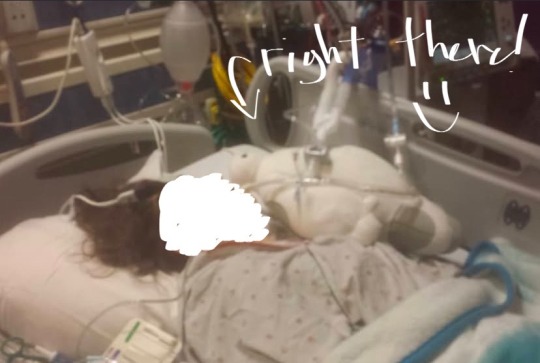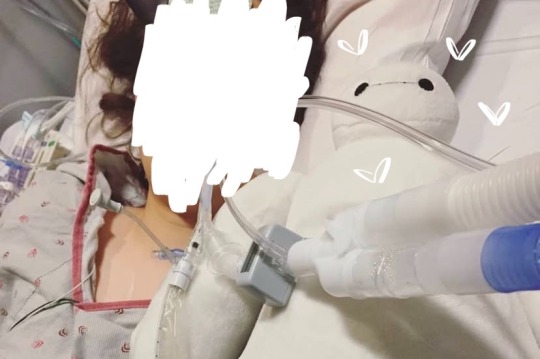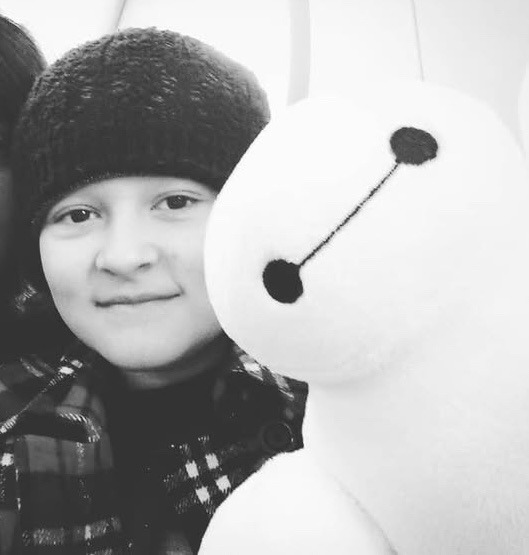#CARDIAC CATHETERIZATION
Explore tagged Tumblr posts
Text
#interventional cardiologist in Lucknow#heart doctor in Lucknow#best cardiologist in Lucknow#cardiac care services in Lucknow#heart disease treatment in Lucknow#cardiovascular expert in Lucknow#cardiac catheterization#angioplasty specialist in Luknow#heart attack prevention
0 notes
Text
Introduction:
In the realm of modern medicine, certain techniques stand as pillars of innovation, revolutionizing the way procedures are performed and patient outcomes are improved. One such technique is the Seldinger Technique. Developed by Dr. Sven-Ivar Seldinger in 1953, this method has become a cornerstone in various medical procedures, from inserting central venous catheters to performing angiography and even certain types of biopsies.
In this comprehensive guide, we delve into the intricacies of the Seldinger Technique, its applications, and its significance in contemporary healthcare.
#CARDIAC CATHETERIZATION#CENTRAL VENOUS ACCESS#EMERGENCY MEDICINE#HEALTHCARE ADVANCEMENTS#INTERVENTIONAL RADIOLOGY#MEDICAL INNOVATION#MEDICAL PROCEDURES#MINIMALLY INVASIVE PROCEDURE#SPATIENT SAFETY#SELDINGER TECHNIQUE
0 notes
Text
#cardiology#cardiología#cricket cardio batting#cardiovascular fellows’#cardiac#cardiovasculares#cardioprotection#cardiacos#myocardial infarction#cardiovascular disease#cardiac track#cardiac catheterization#cardiac arrest#blood clot prevention#stanford cardiovascular institute#cardiovascular education & training#cardiovascular disease (disease or medical condition)#non standard heart attack symptoms#houston methodist#nitric oxide foods
0 notes
Text
#cardiology#cardiología#cricket cardio batting#cardiovascular fellows’#cardiac#cardiovasculares#cardioprotection#cardiacos#how to defend the ball in cricket#myocardial infarction#how to play front foot defence hindi#cardiovascular disease#cardiac track#cardiac catheterization#front foot defence in cricket in hindi#cardiac arrest#front foot defence#how to play defence#front foot defence kaise karte hain#blood clot prevention#l arginina beneficios
0 notes
Text
#cardiology#cardiología#cricket cardio batting#cardiovascular fellows’#cardiac#cardiovasculares#cardioprotection#cardiacos#how to defend the ball in cricket#myocardial infarction#how to play front foot defence hindi#cardiovascular disease#cardiac track#cardiac catheterization#front foot defence in cricket in hindi#cardiac arrest#front foot defence#how to play defence#front foot defence kaise karte hain#l arginina beneficios#blood clot prevention
0 notes
Text
#cardiology#cardiología#cricket cardio batting#cardiovascular fellows’#cardiac#cardiovasculares#cardioprotection#cardiacos#how to defend the ball in cricket#myocardial infarction#how to play front foot defence hindi#cardiovascular disease#cardiac track#cardiac catheterization#front foot defence in cricket in hindi#cardiac arrest#front foot defence#how to play defence#front foot defence kaise karte hain#l arginina beneficios#blood clot prevention
0 notes
Text
I didn't stop to appreciate this until now but I went from being so terrified of getting an IV that I asked to be anesthetized before it was placed in 2010 to getting an IV by myself without it being too big a deal in 2024.
10 notes
·
View notes
Text
hey girl, are you a radiation source? cause my insides turn into mushy goo when i'm around you. the rest of my body too, actually
#pick up lines#this came to me in the middle of a cardiac catheterization i shit you not#me: watching some guy get wires poked through his heart#my brain: yes this is the perfect time to think about dumb pickup lines#i was getting radiated on at the time though so it feels appropriate
3 notes
·
View notes
Text
Global Cardiac Catheterization Market Projects 7% CAGR with Demand for Outpatient Procedures by 2030
The cardiac catheterization market is projected to grow at a CAGR of ~7% over the forecast period. Major factors driving the growth include the rising prevalence of cardiovascular diseases, growth in the geriatric population, advancements in catheterization technology, increased demand for minimally invasive procedures, adoption of sedentary lifestyles worldwide, and favorable reimbursement policies for cardiac catheterization procedures.
Cardiac catheterization, also known as cardiac cath or heart catheterization, is a medical procedure used to diagnose and treat cardiovascular conditions. It involves inserting a thin, flexible tube (catheter) into a blood vessel, usually in the groin, arm, or neck, and directing it to the heart. This allows healthcare providers to evaluate heart function, identify blockages in the coronary arteries, measure blood pressure inside the heart, and perform procedures like angioplasty and stent placement.
🔗 Want deeper insights? Download the sample report: https://meditechinsights.com/cardiac-catheterization-market/request-sample/
Advancements in catheterization technology fuel its demand
Advancements in catheterization technology have significantly enhanced the effectiveness, safety, and precision of cardiac procedures. Recent advancements in catheterization technology include:
Advanced Imaging Techniques: The advent of high-definition imaging technologies allows for clearer, more detailed views of the heart's structure and function, facilitating accurate diagnoses and targeted treatments. Techniques such as intravascular ultrasound (IVUS) and optical coherence tomography (OCT) provide real-time, high-resolution images from inside the heart and blood vessels, enabling precise interventions.
Robotic-Assisted Catheterization: Robotic technology has improved the precision and accuracy of heart procedures, allowing for better control during complex interventions while minimizing the risk of human error. Robotic-assisted procedures have been shown to enhance the precision of stent placement, reduce procedure times, and minimize radiation exposure to both patients and healthcare providers.
Drug-Eluting Stents: The development of drug-eluting stents has revolutionized the treatment of coronary artery disease within the realm of cardiac catheterization. Drug-eluting stents (DES) release medication to prevent the re-narrowing of arteries and dissolve over time, reducing long-term complications.
Transcatheter Aortic Valve Replacement (TAVR): TAVR allows patients with aortic valve stenosis to receive treatment without the need for open-heart surgery. These advancements in catheterization technology have improved the effectiveness and safety of cardiac interventions and reduced recovery times, enabling patients to return to normal activities much faster.
Rising prevalence of cardiovascular diseases drives market growth
The increasing prevalence of cardiovascular diseases (CVDs) has emerged as a significant global health challenge, contributing substantially to morbidity and mortality rates. Lifestyle factors such as physical inactivity, unhealthy diets, smoking, obesity, diabetes, and hypertension have led to a surge in heart-related conditions, including coronary artery disease, heart attacks, and heart failure. According to the World Health Organization (WHO), CVDs remain the leading cause of death worldwide, accounting for approximately 17.9 million deaths in 2019, which represents 32% of all global fatalities. Notably, 85% of these deaths were attributed to heart attacks and strokes, with projections suggesting a potential 90% increase in CVD prevalence between 2025 and 2050. This growing burden has intensified the need for advanced diagnostic and interventional solutions, such as cardiac catheterization, to facilitate early detection and effective treatment. As awareness of cardiovascular health rises and healthcare infrastructure continues to advance, particularly in developing regions, the demand for minimally invasive cardiac procedures is expected to grow, fostering further technological innovations in the field.
Competitive Landscape Analysis
The global cardiac catheterization market is marked by the presence of established and emerging market players such as Abbott Laboratories; Medtronic Plc; Johnson & Johnson; Boston Scientific Corporation; B. Braun Melsungen AG; Terumo Corporation; Teleflex Incorporated; Cook Medical; Cardinal Health, Inc.; Merit Medical Systems, Inc.; AngioDynamics, Inc.; and Nipro Corporation; among others. Some of the key strategies adopted by market players include new product development, strategic partnerships and collaborations, and investments.
Gain a competitive edge-request a sample report now! https://meditechinsights.com/cardiac-catheterization-market/request-sample/
Market Segmentation
This report by Medi-Tech Insights provides the size of the global cardiac catheterization market at the regional- and country-level from 2023 to 2030. The report further segments the market based on procedure, application, and end user.
Market Size & Forecast (2023-2030), By Procedure, USD Million
Catheter Ablation
Coronary Angioplasty
Bipolar Pacing
Balloon septostomy
Right Heart Catheterization
Left Heart Catheterization
Others
Market Size & Forecast (2023-2030), By Application, USD Million
Coronary Artery Disease (CAD)
Heart Valve Disease
Arrhythmia Treatment
Cardiomyopathy
Congenital Heart Defects
Heart Failure Management
Others
Market Size & Forecast (2023-2030), By End User, USD Million
Hospitals
Ambulatory Surgical Centers (ASCs)
Academic & Research Institutes
Specialty Cardiac Centers
Others
Market Size & Forecast (2023-2030), By Region, USD Million
North America
US
Canada
Europe
UK
Germany
France
Italy
Spain
Rest of Europe
Asia Pacific
China
India
Japan
Rest of Asia Pacific
Latin America
Middle East & Africa
About Medi-Tech Insights
Medi-Tech Insights is a healthcare-focused business research & insights firm. Our clients include Fortune 500 companies, blue-chip investors & hyper-growth start-ups. We have completed 100+ projects in Digital Health, Healthcare IT, Medical Technology, Medical Devices & Pharma Services in the areas of market assessments, due diligence, competitive intelligence, market sizing and forecasting, pricing analysis & go-to-market strategy. Our methodology includes rigorous secondary research combined with deep-dive interviews with industry-leading CXO, VPs, and key demand/supply side decision-makers.
Contact:
Ruta Halde Associate, Medi-Tech Insights +32 498 86 80 79 [email protected]
0 notes
Text
youtube
Before undergoing heart valve replacement surgery, doctors perform several tests to evaluate the condition of the heart and overall health. These tests help determine the best treatment approach.
Echocardiogram (Echo)
Electrocardiogram (ECG or EKG)
Chest X-ray
Cardiac Catheterization (Angiogram)
CT Scan or MRI Scan
Blood Tests
#Heart Valve Replacement Surgery#Echocardiogram (Echo)#Electrocardiogram (ECG or EKG)#Cardiac Catheterization (Angiogram)#CT Scan or MRI Scan#Youtube
0 notes
Text
Cardiac catheterization Hospital Mohali
Experience unparalleled cardiac care at IVY Hospital, Mohali's premier destination for cardiac catheterization. Our state-of-the-art facility is equipped with the latest technology and staffed by a team of skilled cardiologists dedicated to delivering exceptional patient outcomes. Whether you require diagnostic procedures or interventional treatments, our expert team ensures personalized care tailored to your unique needs. Trust IVY Hospital for advanced cardiac catheterization services, setting the standard for excellence in cardiovascular care in Mohali. Your heart health is our priority, and we are committed to providing you with the highest quality care possible.
0 notes
Text
Unveiling the Research Behind Cardiac Catheterization Market Services
Market Overview –
The Cardiac Catheterization Market encompasses medical procedures and equipment used to diagnose and treat heart conditions through minimally invasive techniques. Cardiac catheterization involves inserting a catheter into a blood vessel and guiding it to the heart to perform diagnostic tests, visualize blood flow, and deliver therapeutic interventions such as angioplasty and stent placement.
One significant driver of the Cardiac Catheterization Market's growth is the increasing prevalence of cardiovascular diseases globally. Conditions such as coronary artery disease, heart failure, and valvular heart disease contribute to the growing demand for cardiac catheterization procedures as clinicians seek to diagnose and manage these conditions promptly.
Advancements in catheterization techniques, imaging technologies, and interventional cardiology devices have also fueled market growth by improving procedural outcomes, reducing complications, and expanding the scope of minimally invasive cardiac interventions. Additionally, the shift towards outpatient procedures and same-day discharge protocols has increased the efficiency and accessibility of cardiac catheterization services, driving further demand.
Moreover, the aging population and the rising adoption of sedentary lifestyles contribute to the increasing burden of cardiovascular diseases, further driving the demand for cardiac catheterization procedures. As healthcare systems prioritize preventive cardiology, early diagnosis, and timely intervention, the Cardiac Catheterization Market is expected to continue growing, offering opportunities for innovation and collaboration among medical device manufacturers, healthcare providers, and researchers.
The Cardiac Catheterization Market, often referred to as the cardiology catheter market, is experiencing significant growth attributed to advancements in minimally invasive procedures for diagnosing and treating heart conditions. With a rise in cardiovascular diseases globally, the demand for these catheters is increasing, propelling market expansion.
The Cardiac Catheterization Market was valued at USD 0.35 billion in 2022. The Cardiac Catheterization market is expected to increase from USD 0.3731 billion in 2023 to USD 26.4 billion by 2032, with a compound yearly growth rate (CAGR) of 7.4% over the forecast period (2023-2032).
Market Segmentation –
The market is segmented into five Key dynamics for an easy grasp.
By Procedures: Balloon Septostomy, Coronary Angioplasty, Catheter Ablation, Bipolar Pacing, Left Heart Catheterization, and Right Heart Catheterization among others.
By Types: Fractional Flow Reserve, Coronary Angiogram, Intravascular Ultrasound, and Optical Coherence Tomography among others.
By Applications: Heart Attack, Abnormal Stress Test, Coronary Vasospasm, and Cardiac Arrhythmia, among others.
By End-Users: Hospitals and Clinics among others.
By Regions: Comprises Geographical regions - North America, Europe, APAC and Rest of the World.
Regional Analysis –
The regional analysis of the cardiac catheterization market reflects disparities in healthcare infrastructure, prevalence of cardiovascular diseases, and adoption of minimally invasive procedures. North America leads the market, driven by advanced healthcare facilities, high prevalence of cardiovascular conditions, and early adoption of innovative technologies. Europe follows suit, with robust investments in healthcare infrastructure and increasing demand for minimally invasive cardiac procedures. In the Asia-Pacific region, improving access to healthcare services, rising disposable incomes, and growing awareness about cardiovascular health contribute to market growth. Developing regions in Latin America and Africa are also witnessing gradual market expansion as healthcare infrastructure improves and awareness about cardiovascular diseases increases.
Key Players –
Cardiac catheterization market Key companies include St. Jude Medical (US), Medtronic Inc. (US), Becton, Dickinson, and Company (US), Terumo Medical Corporation (Japan), Teleflex Incorporated (US), Edwards Life Sciences Corporation (US), Abbott (US), Boston Scientific Corporation (US), Rochester Medical Corporation (US), Johnson & Johnson Private Limited (US), Dispocard GmbH (Germany), Maquet Medical India Private Limited (India), and Coloplast (Denmark).
Related Reports –
US Melanoma
Middle East and Africa HIV Diagnosis & Treatment
Gastroparesis Treatment
Dental Infection Treatment
For more information visit at MarketResearchFuture
#Cardiac Catheterization Market#Cardiac Catheterization Market Size#Cardiac Catheterization Market Share#Cardiac Catheterization Market Trends#Cardiac Catheterization Market Growth
0 notes
Text
BREAKING | Palestinian Ministry of Health in Gaza:
Gaza European Hospital is now out of service due to recent attacks.
The attack caused extensive damage to infrastructure, including sewage lines, internal departments, and the roads leading to the hospital.
The repeated targeting of the hospital makes it impossible to provide medical care, posing serious risks to medical teams, the wounded, and patients.
The hospital’s shutdown means a halt in specialized services such as neurosurgery, thoracic surgery, cardiac catheterization, cardiac and vascular surgery, and ophthalmology—services that are only available at Gaza European Hospital.
Gaza European Hospital is the only facility providing medical follow-up for cancer patients in the Gaza Strip, especially after the destruction of the Turkish-Palestinian Friendship Hospital.
The hospital’s closure deprives cancer patients of access to treatment protocols and worsens their already critical health conditions.
The hospital includes 28 intensive care beds, 12 infant incubators, 260 inpatient beds, 25 emergency beds, and 60 beds for oncology patients—all of which are now out of service.
Ministry of Health
15 May 2025
64 notes
·
View notes
Text
Kentucky man’s organs were nearly harvested. Then doctors realized he was still alive
The organs of a Kentucky donor who had been declared dead were ready to be harvested — but then doctors made a startling discovery: he was still alive.
“He was moving around — kind of thrashing. Like, moving, thrashing around on the bed,” Natasha Miller, an organ preservationist in the operating room during the alarming October 2021 incident, told NPR. “And then when we went over there, you could see he had tears coming down. He was crying visibly.”
Miller, who works at Kentucky Organ Donor Affiliates (KODA), told the outlet that two doctors refused to perform the organ retrieval after realizing that the donor had wrongly been declared dead.
“The procuring surgeon, he was like, ‘I’m out of it. I don’t want to have anything to do with it,’ ” Miller said. “It was very chaotic. Everyone was just very upset.”
The patient was 36-year-old Anthony Thomas “TJ” Hoover II, who had been admitted to Baptist Health hospital in Richmond, Kentucky earlier that day after a drug overdose, his sister Donna Rhorer told the outlet.
Rhorer recalled a flicker of concern when as her brother was being taken from the intensive care unit to an operating room. She recalled seeing him open his eyes, which then began darting around the room.
“It was like it was his way of letting us know, you know: ‘Hey, I’m still here,’” Rhorer told NPR.
In the operating room, Miller recalled the case coordinator phoning her supervisor at KODA for help once they saw signs of life. The supervisor insisted that the case coordinator needed to “find another doctor to do it,” Miller recalled.
Ultimately, the organ retrieval was canceled. Hoover now lives with Rhorer, his legal guardian.
Hoover is safe, but the shocking moment stuck with KODA workers, some of whom quit after that incident.
“The donor had woken up during his procedure that morning for a cardiac catheterization. And he was thrashing around on the table,” Martin said. But then, doctors sedated the patient and continued to plan to recover his organs, she added.
“That’s everybody’s worst nightmare, right? Being alive during surgery and knowing that someone is going to cut you open and take your body parts out?” Martin told NPR. “That’s horrifying.”
114 notes
·
View notes
Text

Exactly 10 years ago marks today the day I was taken into the hospital and stayed in the ICU for almost two weeks.
I was going in for a cardiac catheterization but it quickly turned into a life threatening situation where I fell into cardiac arrest during the procedure.
I had to re-learn how to write and walk because I was so weak.
Despite my struggles throughout the days, one of the most significant moments I remember during my recovery was that Big Hero 6 would play non-stop on the TV as I layed in my hospital bed while eating my meals and waking up to one of the nurses checking one of the 3 IV tubes I had in my hands/arm in the middle of the night.
Baymax became an immediate comfort character for me at the age of 12. A robotic nurse that protected and cared for anyone in need? It was no surprise that it was bound to happen. In fact, I was gifted a plushie of him! He would stay by my side while I was under anesthesia. (Here’s the proof! I figured to ‘censor’ my face in the first two due to the breathing tube being shown that it was going down my throat and thought it might be ‘too graphic’ to show. But he’s there!)



He’ll always be my favorite robot of all time 🤍
The nurses were all so nice to me and comforted me when I was nervous the whole time I was there. They even gifted me a piggy plushie that I soon named him Waddles since I really loved Gravity Falls at the time!
I really hope those nurses are doing well after all this time, and I owe them a humongous ‘thank you’ to all of them. Along with my parents, my mom being there for me from the moment it happened and to my dad who flew to the hospital right when he heard the news.
Overall, it’s insane how it’s been a decade now since the incident and my diagnosis of my heart condition. Im really grateful to still be here to draw stupid things to my sensitive heart’s content <3
Thank you Baymax, I am now satisfied with my care.
#i hope this isn’t too sappy#baymax#big hero 6#big hero six#hospital anniversary#comfort character#self insert#aritheunicorn
28 notes
·
View notes